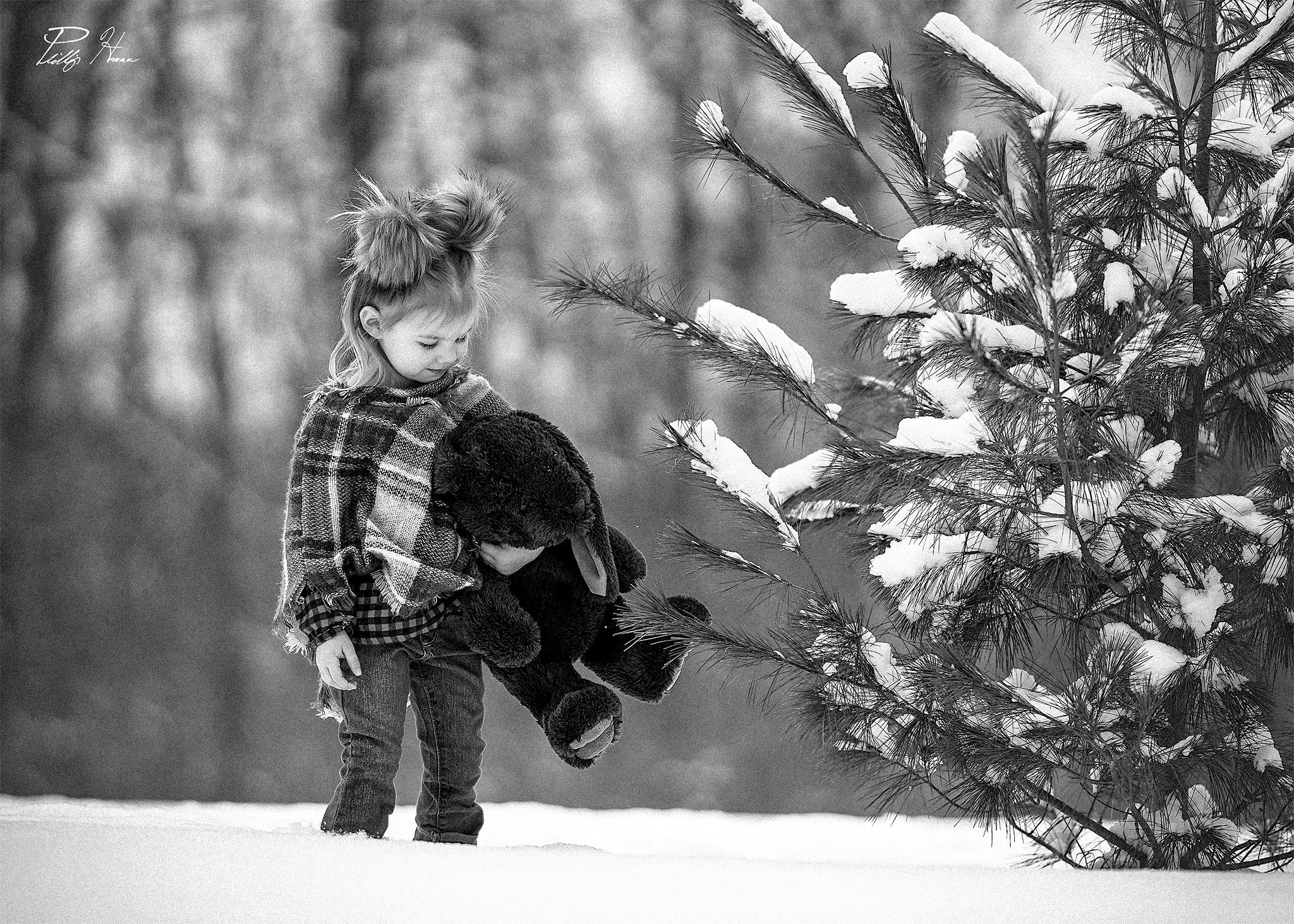Black and White Photography: Stripping Color to Reveal Soul
By: Phillip Haumesser
In the vibrant world of photography, where colors pop and saturate our senses, black and white stands as a timeless rebel—removing hues to uncover raw emotion, texture, and form. As we roll through August 2025, with its intense summer contrasts and lingering storms, monochrome offers a fresh lens: What if ditching color forces us to see deeper, questioning light's dance and shadow's secrets? Does a grayscale portrait strip away distractions to reveal character, or does it challenge our reliance on vibrancy for impact? This post delves into black and white photography's allure, techniques, and applications, with hands-on tips to make it your go-to style. Whether you're converting old shots or planning new ones, let's explore how monochrome can transform your work into something profoundly evocative.
The Timeless Appeal of Monochrome: Why Go Gray?
Black and white isn't a fallback—it's a choice that amplifies drama. By eliminating color, it spotlights composition, contrast, and texture, turning ordinary scenes into abstract art. Historically, it was photography's origin, but in 2025's digital age, it's a deliberate pivot from oversaturated feeds. Monochrome evokes nostalgia, like old film rolls, but also modernity—think high-contrast urban shots that question societal edges.
From my viewfinder, black and white reveals what color hides: The grit in a weathered face, the mood in stormy clouds. It probes deeper: In a colorful world, does removing hues make images more universal, or does it risk losing warmth? Trends show a resurgence in monochrome for social media and prints, where it stands out amid rainbow chaos. It's thought-provoking: By simplifying, do we heighten emotional connection, or challenge viewers to fill in the "missing" vibrancy?
Core Principles: What Makes Monochrome Magic
To nail black and white, understand its building blocks:
Contrast as King: Without color, light and dark define everything. High contrast creates punch—deep blacks against bright whites—while low contrast offers subtlety for moody scenes. Tip: Look for subjects with strong tonal ranges, like silhouetted trees at dusk.
Texture Takes Center Stage: Monochrome highlights surfaces—rough bark, smooth skin, rippled water. Side lighting accentuates this, casting shadows that add depth. Question: Does focusing on texture make photos more tactile, inviting touch in a visual medium?
Shape and Form Over Hue: Lines, curves, and silhouettes become heroes. A curved road vanishing into fog gains mystery in gray tones. In 2025, AI converters in apps like Lightroom predict optimal grayscale adjustments, but manual tweaks keep it personal.
Emotional Resonance: Black and white often feels dramatic or introspective—perfect for portraits evoking vulnerability or landscapes suggesting isolation. Ponder: Without color's cheer, does monochrome tap into primal emotions, or limit joyful expressions?
Composition Refinement: Rule of thirds, leading lines, and negative space shine brighter. Symmetry in monochrome can feel balanced or eerie—use it wisely.
These principles challenge: In a hyper-visual era, can black and white's restraint make your work more memorable?
Techniques to Master Black and White
Turn principles into practice:
Shooting in Monochrome Mode: Many cameras have B&W settings for previewing—train your eye to see tones live. Tip: Shoot RAW for flexibility in post.
Lighting Strategies: Dramatic light works best—golden hour casts long shadows, overcast softens for even tones. Experiment with backlighting for silhouettes that question foreground vs. background roles.
Conversion Methods: In editing, desaturate isn't enough—use channel mixers (red for skin smoothing, blue for skies). Tools like Silver Efex add film grain for vintage vibe. 2025 updates in Photoshop include AI that suggests tonal maps based on mood.
High-Key vs. Low-Key: High-key (mostly lights) for airy feel—overexpose slightly. Low-key (dominated by darks) for mystery—underexpose and boost shadows. Humor: It's like choosing between a sunny disposition or brooding artist—both have charm!
Subject Selection: Portraits pop with textured skin; streets gain grit; abstracts thrive on patterns. Avoid busy scenes—minimalism pairs perfectly with monochrome.
Deeper probe: Does converting color shots to B&W salvage "failures," or should you plan monochrome from the start for authenticity?
Applications: Where Monochrome Thrives
Monochrome adapts beautifully:
Portraits: Reveals character lines and expressions—think a child's wide eyes in stark contrast.
Landscapes: Emphasizes forms—rolling hills become sculptural under gray skies.
Street Photography: Captures urban rawness— a lone walker in rain gains narrative weight.
Abstracts: Patterns like fence shadows turn everyday into art.
Fine Art Prints: In 2025, monochrome NFTs highlight timelessness amid digital flux.
In business, it's versatile for moody branding or editorial work. Trend: Hybrid with subtle color pops (selective desaturation) for emphasis. Question: Does adding one color "cheat" minimalism, or enhance focus?
Post-Processing: Refining the Grayscale
Editing is crucial—boost blacks for depth, whites for highlights. Use curves for S-shaped contrast. Dodge/burn to sculpt light. Avoid over-sharpening—grain adds character. Tip: Compare color vs. B&W versions; sometimes monochrome transforms a meh shot.
Pitfall: Losing mid-tones—histogram watch ensures balance. Thought: Does heavy editing in monochrome preserve "truth," or craft a stylized reality?
Ethical and Philosophical Dimensions
Monochrome can abstract scenes, potentially romanticizing hardship (e.g., gritty streets). Ethically, disclose manipulations. Philosophically, it questions perception: Without color's bias, do we see more objectively, or impose our own narratives?
Common Mistakes and Fixes
Flat Tones: Boost contrast; seek stronger light.
Noisy Conversions: Shoot low ISO; denoise selectively.
Boring Comps: Add subtle elements like fog for interest.
Color Reliance: Train by shooting B&W only for a week.
Fix: Review in grayscale preview to spot issues early.
Your Monochrome Challenge
This week, convert 3 color photos to B&W and shoot 2 new ones in monochrome. Note: How does removing color change the story? Share reflections: Has grayscale shifted your perspective on a subject?
Wrapping It Up
Black and white photography distills the world to its core, using contrast, texture, and form to create impactful, soul-stirring images. It's a style that demands intention but rewards with depth and timelessness. In 2025's colorful chaos, embrace monochrome to stand out and delve deeper.
Grab your camera, switch to gray, and let the tones tell the tale!
~Phillip
Ready to Dive Into Monochrome Mastery?
Black and white strips away the extras to reveal photography's heart, and it's a technique that adds timeless edge to any portfolio. In my Online Photography Academy, you'll get over 100 video tutorials on grayscale conversions, contrast techniques, texture emphasis, and more, with a dedicated Q&A where I answer your specific questions. Whether tweaking portraits or abstracts, let's make your images strikingly simple—join today and uncover the power of gray!

